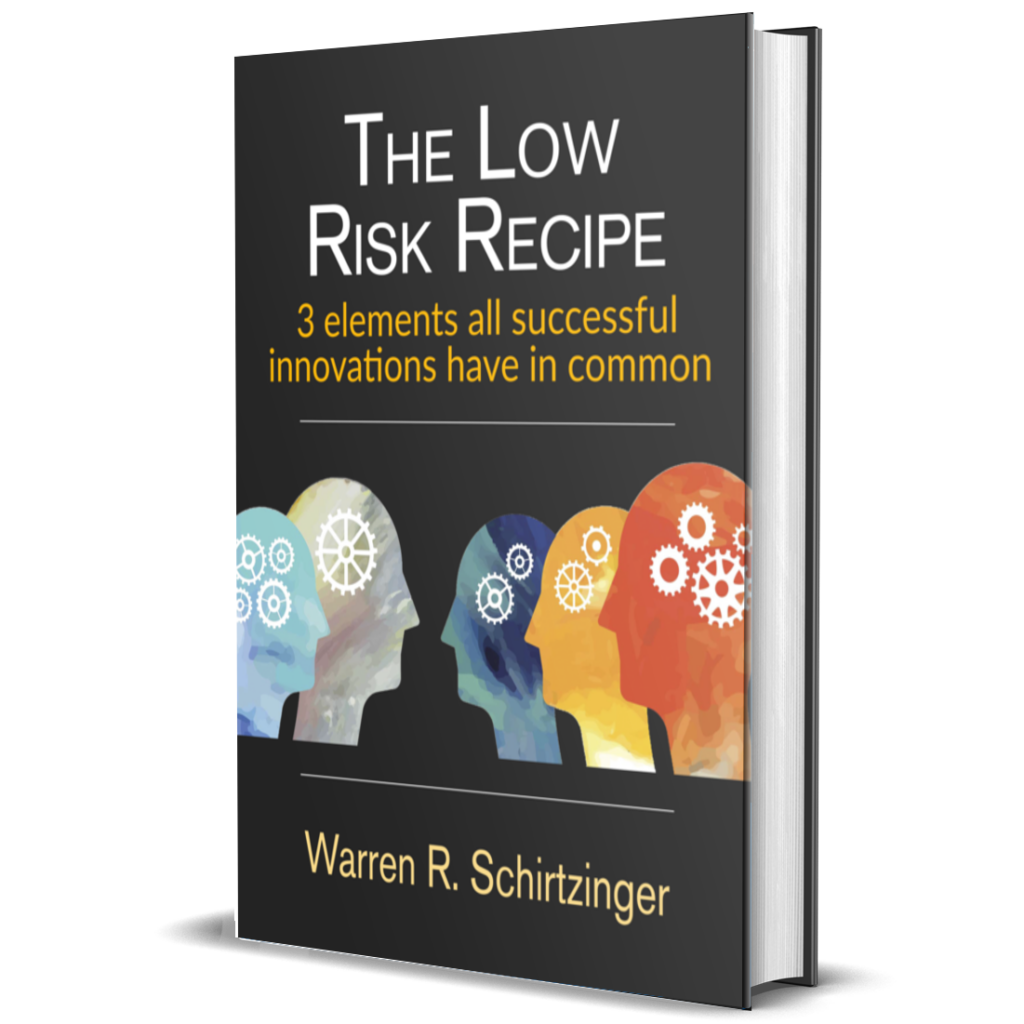
The Low Risk Recipe™
Three elements all successful products
and innovations have in common
The most basic instinct in human beings and the question the entire human body is asking every second of every day is:
Am I safe?
No matter what age, role or status, every human is unconsciously and repeatedly asking themselves that one question.
A small number of risk-takers are willing to gamble on something substantially new and different. But 85% of all people do not like taking chances and prefer to avoid risk in order to feel safe. This explains why the hidden element behind all successful innovation is the perception of low risk. The good news is a company can provide everything a customer needs to feel safe using the concept of the Low Risk Recipe.
Today a new landscape of risk has emerged, led by the Covid-19 pandemic, that has a profound effect on how people evaluate and buy new products. There is an increased level of unpredictability in the economy and in society that represent enormous risk for both customers and end users.
These risks are increasingly focused on health and sustainability, but include factors such as: domestic political polarization, cyberattacks and technical/infrastructure security, climate change, and an information ecosystem that is plagued with fake and biased news.
What makes a person feel safe?
It’s hard to believe but the majority of customers don’t want the latest and greatest features. And many great innovations, social movements and new technologies take decades to achieve mainstream mass-market adoption, primarily because of the mistaken belief that new products must be revolutionary.
Mainstream customers primarily want low risk, evolutionary progress (from an established supplier), and familiarity. And every technology or innovation that is currently in the mainstream got there through the creation of a low-risk offering. Eighty-five percent of all new products fail because the creator doesn’t emphasize and deliver the perception of low risk.
That’s why the risk-lowering techniques we have created are unique, address the realities of doing business in an environment of increasing, multi-dimensional risk.

Elements that Lower the Perception of Risk
The Low Risk Recipe framework is one of the most powerful techniques developed by High Tech Strategies. LRR provides clear guidance for developing a low-risk offering which is the most important dimension of value for mainstream customers and buyers. The three elements that translate into the perception of low risk are:
Affinity – a feeling of closeness and understanding that someone has for another person or organization because of their similar qualities, ideas, or interests
Reliability – the quality of performing consistently well; is trustworthy and has the appropriate domain expertise.
Assurance – the state of being sure or certain about something, or a strong feeling of confidence; freedom from self-doubt or uncertainty.

The Low Risk Recipe™ is also unique in two ways. First, it takes a very different approach to accelerating change than most other innovation-adoption theories. Instead of focusing on persuading individuals to change, it describes change as being caused by the evolution or “reinvention” of products and services, so they become a better fit for the safety needs of individuals and groups.
With the Low Risk Recipe, it is not people who change, but the innovations themselves. It requires a company to continually redirect and renew the elements of their recipe in a way that reduces perceived risk.
Second, this is not a product-centric model. The Low Risk Recipe illustrates that your core product or technology makes up a very small proportion of the value that is delivered to the end user. The largest contribution to value creation comes from the attributes that reduce perceived risk and are the defining characteristics of the delivered product.
As products or innovations move through the technology adoption lifecycle, risk reduction assumes more importance. This is the essence of the Low Risk Recipe. Often, pioneering new products lose their initial prominence because a new entrant is more successful in delivering a product that is based on a more effective mix of intangible attributes. This can be the case even if the second product is not technically superior.

The Low Risk Recipe requires a company to continually redirect and renew the elements of their product in a way that encourages end-user adoption by lowering the perception of risk. LRR also provides an exceptionally rare opportunity for a market leader to further secure its position, or for a new market entrant to leapfrog traditional competitors.
Formulas that fail
When taking your new innovation to market, early adopters will be your biggest supporters. They see the world the same way as innovative entrepreneurs, and early adopters are happy to be the first to try something new. The fatal mistake managers make is assuming all customers have early-adopter personalities and characteristics.
Unfortunately, the familiar characteristics of your early customers are in direct opposition to the characteristics of mainstream customers. So the reluctance to see future customers as fundamentally different, and the tendency to treat all customers as early adopters, combine to give you the early adopter disease, which is fatal.
Using the Low Risk Recipe with an emerging innovation remains a special art, particularly in markets where the majority of customers are still classified as early adopters. In this situation, traditional research techniques usually do not provide adequate insight into low risk attributes. Instead, the entrepreneur is often wiser to embark on a course of creating the elements of low risk rather than searching for them in the customer base.
And finally, people don’t buy what you do, and they don’t buy why you do it. People buy what makes them feel safe. Starting with “why” is also a formula for failure.

